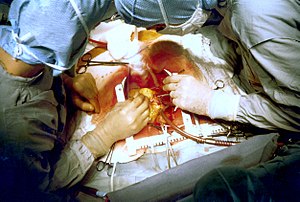 The costs of treating heart disease are expected to triple by the year 2030, creating an “enormous financial burden” for millions of Americans, the American Heart Association says in a new policy statement.
The costs of treating heart disease are expected to triple by the year 2030, creating an “enormous financial burden” for millions of Americans, the American Heart Association says in a new policy statement.
The tab for treating heart disease will rise to $545 billion over the next 20 years, in large part because of the aging of the baby boom population, the oldest of which will be in their mid-80s by then. The policy statement is published in Circulation: Journal of the American Heart Association.
Paul Heidenreich, MD, chair of the AHA’s panel that issued the statement, says in a news release that despite great strides made in reducing heart disease and understanding its causes in the past 50 years, “even if we just maintain our current rates, we will have an enormous financial burden on top of the disease itself.”
Cost estimates for 2030 "don’t assume that we will continue to make new discoveries to reduce heart disease," says Heidenreich, associate professor of medicine at the Veterans Affairs Palo Alto Health Care System, who is also associated with Stanford University.
Future costs were estimated based on current rates of heart disease, and information from the U.S. Census Bureau was used to project population shifts in age and race. The analysis did not take into account any changes in outcome for various heart disorders in the future, and assumed a continued acceleration of health care spending on heart disease based upon historical trends.





 Toothpaste can be widely contaminated with lead and other dangerous heavy metals, new research shows.
Most of...
Toothpaste can be widely contaminated with lead and other dangerous heavy metals, new research shows.
Most of... CT scans diagnose afflictions from tumors to kidney stones to life-threatening diseases and injuries, such as...
CT scans diagnose afflictions from tumors to kidney stones to life-threatening diseases and injuries, such as...






























